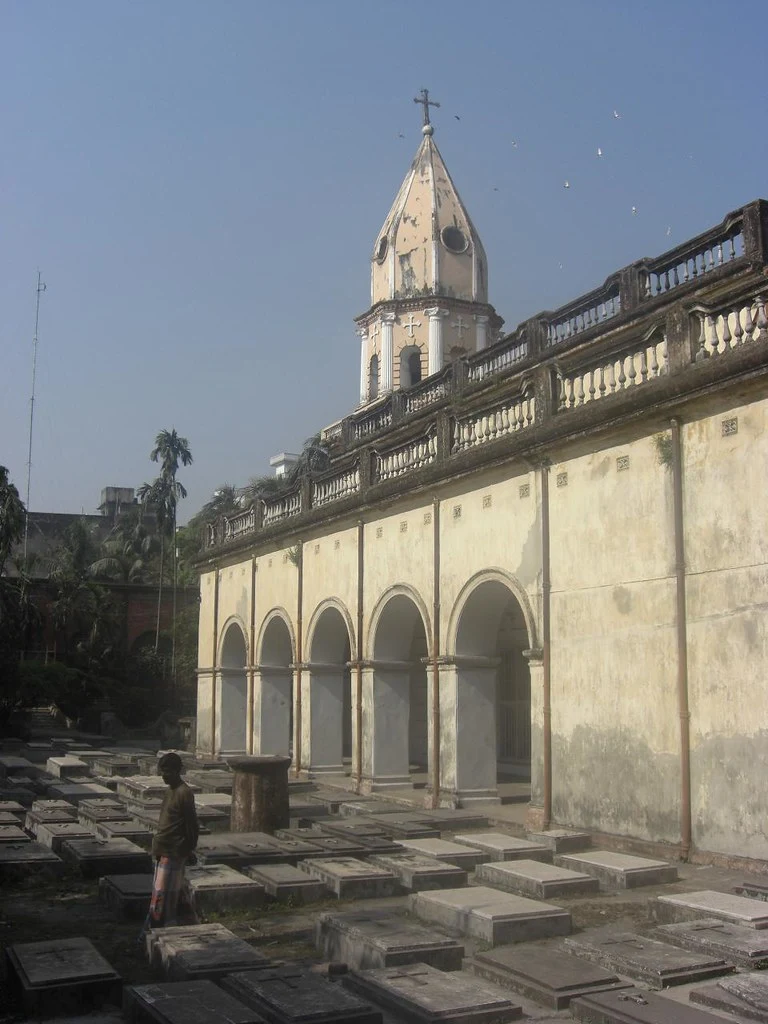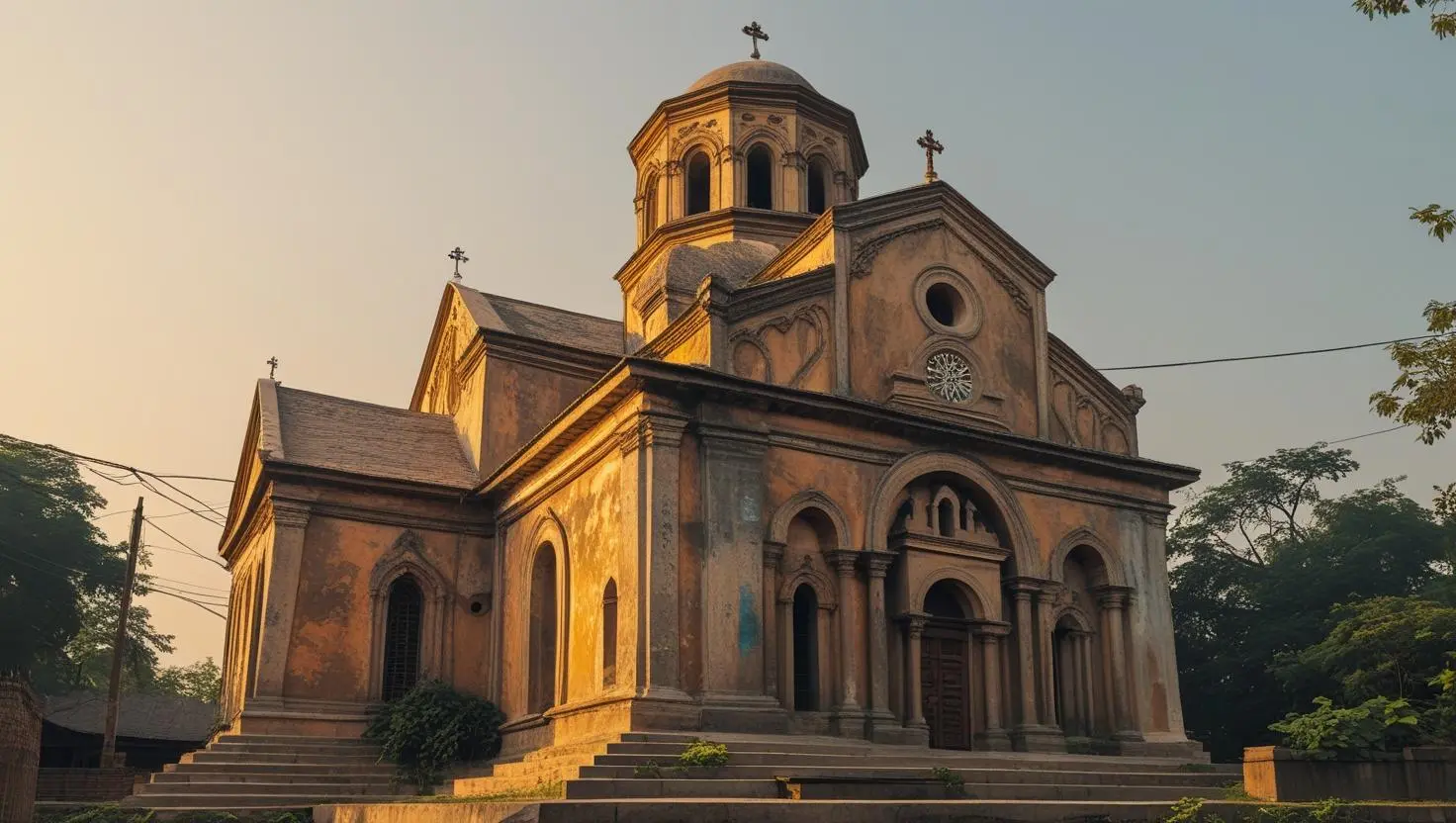Tucked away in the winding, crowded alleys of Old Dhaka lies a peaceful sanctuary of heritage, faith, and forgotten stories—the Armenian Church Dhaka. For many travelers, this might not be on their radar. Yet, for those who take a moment to look past the chaos of the city, this quiet space tells a story that’s centuries old and culturally rich.
If you’ve been planning a historical or cultural trip to Dhaka, the Armenian Church of the Holy Resurrection deserves a spot at the very top of your itinerary.
In this guide brought to you by News On Trip, we’ll take you on a complete journey through this historical landmark: from its origins to architectural details, visiting tips, intriguing stories (including pirate graves!), and everything you need to know before setting foot on its sacred grounds.
Why the Armenian Church Dhaka Matters
Unlike most tourist spots in Dhaka, the Armenian Church isn’t about grand monuments or flashy attractions. It’s about time standing still.
Built in 1781 by Armenian traders who once flourished in Bengal, the Armenian Church Dhaka is more than just a religious building—it’s the last remaining testimony of a once-vibrant Armenian community that contributed to the city’s trade, architecture, and social fabric.
Here’s why it’s such a compelling site for both local and foreign tourists:
- It’s one of the oldest Christian establishments in Dhaka.
- The church houses unique graves, including those with pirate symbols.
- It was built and maintained by a community that vanished but left a lasting mark.
- The statue dedication to a beloved wife still draws emotional awe.
- It offers a quiet escape from Dhaka’s buzzing noise and crowd.
A Glimpse Into the Past: The History of the Armenian Church in Dhaka

The Armenian Connection
Back in the 17th and 18th centuries, Armenians migrated to Bengal as part of the Persian and Ottoman trade routes. Dhaka, known then as a key hub for muslin and silk, became one of their prominent settlements.
By the late 1700s, the Armenian community had grown so significantly that they established their own church—The Armenian Church of the Holy Resurrection.
Constructed in 1781, the church served not just as a place of worship but also a social and community center for the Armenian population in the region.
Dhaka’s Last Armenian Guardian: Dorsey David
A name that often surfaces when discussing the Armenian Church Dhaka is Dorsey David, one of the last descendants of the community tied closely to its upkeep. He, along with Michael Joseph Martin (another key caretaker), ensured the church stood strong even when no Armenians remained to pray within its walls.
Through their dedication, the church survived not only time but also political turmoil, urban development pressures, and neglect.
Architectural Marvels: Inside the Armenian Church Dhaka
While the Armenian Church Dhaka might look modest from the outside, step inside and you’ll find beauty hidden in simplicity. It’s not just the building that impresses, but the soul of its design.
Key Architectural Highlights
- Rectangular layout with thick walls and high ceilings.
- 27 arched windows that allow natural light to flow in.
- A spiral staircase leads to a wooden balcony for congregational overflow.
- The main hall has wooden pews, an altar, and a marble baptismal font.
- Oil paintings depicting Biblical scenes—rare for Dhaka churches.
- A beautifully engraved stone slab floor, each telling a different story.
These design elements were both spiritual and practical. The church had to endure Dhaka’s humid climate and frequent flooding. Its solid structure helped it survive multiple natural disasters, including the 1897 earthquake that destroyed its once-famous bell tower.
The Graveyard: Stories Carved in Stone
One of the most intriguing parts of the Armenian Church in Dhaka is its surrounding graveyard, which contains over 300 graves. It’s like a walk through history—engraved on mossy, weather-worn tombstones.
Highlights Include:
- Pirate Graves: One of the graves bears the infamous skull and crossbones. Local legend suggests it belonged to a pirate or someone associated with naval raids.
- Statue Dedication to a Wife: One grave has a statue erected by a grieving husband, Catchik Avietick Thomas, who wanted to immortalize his beloved wife. The dedication reads, “Best of husbands, loving father, cherished soul.”
- Multilingual Inscriptions: Many grave markers include both Armenian and English, providing unique insights into the community’s blend of East and West.
These graves aren’t just memorials—they’re voices from the past, reminding visitors of lives once lived with love, sorrow, and purpose.
Visiting Hours & Practical Information
Planning your visit to the Armenian Church Dhaka? Here’s everything you need to know:
📍 Location
The church is located in Armanitola, a historic part of Old Dhaka. The area is dense, full of colonial buildings, and best explored on foot or by rickshaw.
🕰 Visiting Hours
- Open daily from 9 AM to 5 PM.
- Occasionally closed during private services or maintenance.
- Always best to go early in the morning to avoid crowds and midday heat.
🎟 Entry Fee
- Free of charge.
- Donations are welcome to support maintenance.
🚶♂️How to Get There
- Use a ride-sharing app like Uber, Pathao, or Shohoz.
- From central Dhaka (e.g., Gulshan), it’s about a 45–60 minute drive, depending on traffic.
- Once in Armanitola, you may need to walk a few minutes through narrow streets.
📷 Photography Tips
- Photography is allowed.
- Avoid flash photography inside the main prayer hall.
- Be respectful while photographing the graves—many locals still treat the space with sacred reverence.
Combine It With A Walking Tour
Since you’re already in Old Dhaka, why not make a full day of it?
After exploring the Armenian Church, consider visiting:
- Lalbagh Fort – A Mughal-era fortress just 10 minutes away.
- Ahsan Manzil – The Pink Palace, rich in Nawabi history.
- Star Mosque (Tara Masjid) – Famous for its star-studded tile design.
- Sadarghat River Port – Take a boat ride on the Buriganga.
Pairing your visit with these sites gives a more rounded picture of Dhaka’s cultural layers.
Unique Features That Set This Church Apart
Unlike other churches in Bangladesh, the Armenian Church in Dhaka stands out for:
- Being part of a now-extinct community.
- Its pirate-associated graves.
- Emotional human elements, like the statue of a beloved wife.
- A strong commitment to preservation despite having no active Armenian community left.
It’s a truly one-of-a-kind spiritual and historic experience in the region.
Frequently Asked Questions (FAQs)
Q: Is the Armenian Church Dhaka still in use?
A: While it no longer holds regular services, it is occasionally used for special religious ceremonies and cultural events.
Q: Who manages the church now?
A: It’s maintained by local caretakers, often supervised by church-friendly trusts or the Armenian diaspora.
Q: Is the area safe for tourists?
A: Yes, but Old Dhaka can be chaotic. Stick to daylight hours, avoid crowded alleys alone, and always keep valuables close.
Q: Are guided tours available?
A: Some local tour companies offer Old Dhaka heritage walks. The church caretaker also shares stories informally.
Q: What’s the best time of year to visit?
A: November to February. The weather is cool and perfect for walking tours.
Common Myths Debunked
Myth 1: The church is abandoned.
Truth: It’s actively maintained, and restoration efforts continue with community and international support.
Myth 2: It’s closed to non-Christians.
Truth: Visitors of all faiths are welcome.
Myth 3: It’s just a graveyard.
Truth: The church has rich interiors, stories, and preserved artworks.
Trust and Accuracy: Powered by News On Trip
At News On Trip, we don’t just write about destinations—we experience them. Our travel writers and local correspondents ensure every detail is accurate and practical.
We believe in real travel stories, not AI fluff or outdated reviews. This guide to the Armenian Church Dhaka is based on:
- Firsthand visits
- Verified historical research
- Interviews with caretakers and local guides
Our mission? To help you travel smarter, deeper, and with purpose.
Final Thoughts: Why You Shouldn’t Miss This Hidden Treasure
The Armenian Church Dhaka isn’t your typical tourist attraction. It doesn’t try to impress with grandeur. Instead, it moves you with silence, stillness, and stories carved in stone.
Whether you’re a history buff, a cultural traveler, or just someone seeking meaning in unexpected places, this church will leave you thoughtful, inspired, and connected to a past that still echoes through the present.
🔔 Ready to Explore?
Add this site to your must-visit list when you’re in Dhaka. You won’t regret stepping into this timeless, hidden sanctuary in the heart of the bustling city.
For more authentic travel stories and local guides like this, stay tuned to News On Trip—where history meets adventure.




